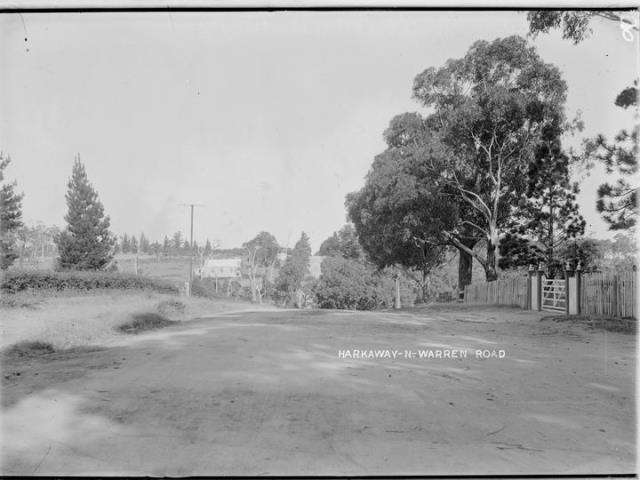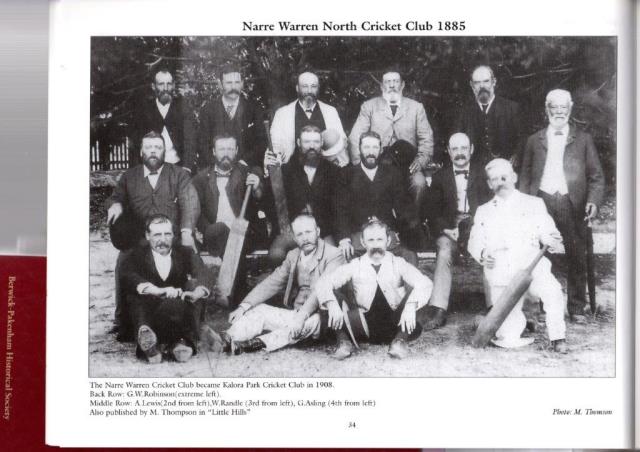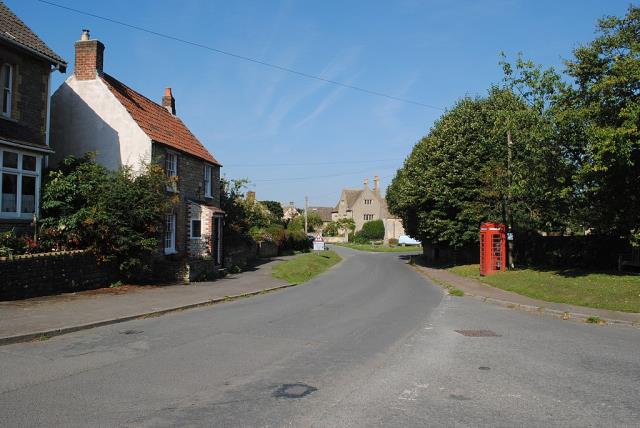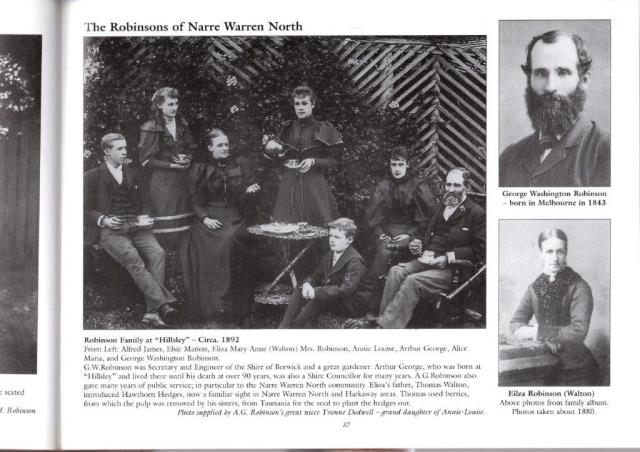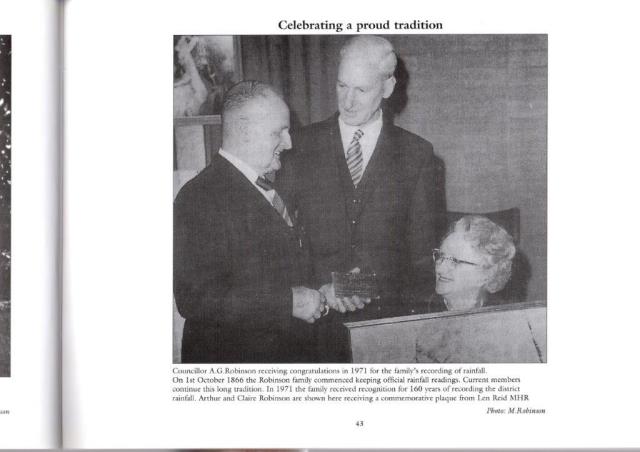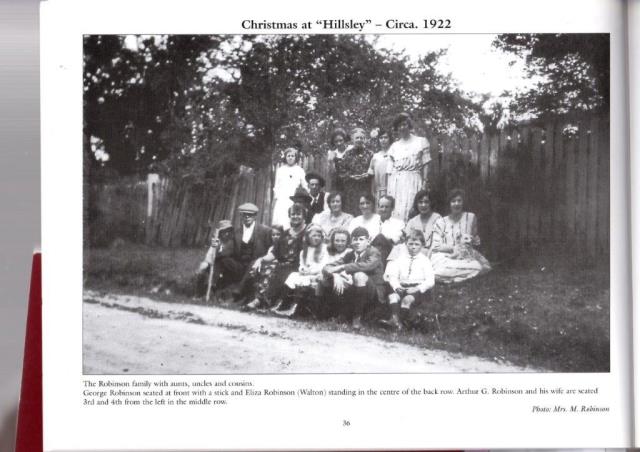
NEIL LUCAS continues his look at the significance of place and street names in the region, this week focusing on the long and significant contribution of the Robinson family of Narre Warren North.
Robinson Road, Narre Warren North
In 1856, 13-year-old Melbourne-born George Washington Robinson, following a trauma of some description (described by him as “a severe accident and shock”), travelled with his uncle John Inglis to Berwick.
Turning off the Gippsland Road in the vicinity of what is now Akoonah Park they travelled through a forest which Inglis advised had been set aside as a reserve for a future township adjacent to the Cardinia Creek water source.
Further to the north they arrived at the Inglis property which comprised a small farming enterprise and a store, the buildings being located on what is now Inglis Road opposite the end of Manuka Road. The store held supplies of brown and white sugar, tobacco, and coarse salt for salting beef in casks.
George’s father Thomas was a brewer and lived in Melbourne with his wife Hannah who had immigrated to Melbourne from her birthplace Hillsley in Gloucestershire, England (since 1980s spelt Hillesley).
In 1856, George’s uncle James Robertson purchased 160 acres (65 hectares) at Narree Worran (now known as Narre Warren North). In 1863 James sold off sections of his land including a parcel of 107 acres (43 hectares) to George’s mother Hannah who subsequently transferred the land to George thus commencing the Robinson’s long association with the area.
In the following year George planted five acres of grape vines which did well and provided him with wine for many years.
George’s first home on the property named “Hillsley” was a small weatherboard where he resided whilst planning the homestead which he was to construct nearby. In 1867 George excavated a clay pit near the house site and proceeded to make 80,000 hand-made bricks (the pit was later converted to a lily pond). Substantial bluestone foundations were laid and the house construction continued.
Timber required for the house was sawn on the property and the flooring was of red pine. The house when completed became the home of George and his new wife Eliza Walton, daughter of local Narre Warren farmer Thomas Walton who had come to the area in 1855.
George and Eliza produced six children Edwin 1868, Annie 1871, Alice 1876, Alfred 1877, Elsie 1879 and George Arthur (known as Arthur) 1885.
George established substantial gardens around the new house and through his friendship with Government Botanist Baron Sir Ferdinand von Mueller acquired many unusual plants for the garden as well as participating in some interesting studies. One study involved tea planting to ascertain whether tea production would be a viable industry – the tea plants grew well but nothing came of this venture.
The Weekly Times reported in 1910 that still in the garden some 40 years later was “a camellia tree, fully 7ft, high and 5ft or 6 foot in diameter growing in the open and presenting a mass of bright red flowers. Massive hydrangeas and enormous brugmansia plants. In addition to all the varieties of choice flowering plants and ornamental shrubs there are in Mr Robinson’s garden a cinchona or quinine tree, 15 years old. An ancient cork tree (Quercus suber) has attained a height of over 50ft. It is 4ft in diameter and is covered with the finest sheets of bark from which the best commercial corks are cut. There should be no necessity to import cork material when such specimens of trees as those grown by Mr Robinson can be produced in the State. Another novelty in the interesting garden collection is a plot of Chinese and Indian tea plants. The soil and climate seems to suit the growths, which have made excellent progress over the years. The bottle tree of Northern Australia has also done well at Narre Warren.”
George also became quite an expert with the production and showing of gladioli in 1916 staging a display of 50 different varieties.
In the 1870s George planted out orchards comprising apples, peaches, plums and pears by 1910 totalling 30 acres in area. George harvested up to six cases of fruit from his Jonathon and Sturmer Pippin apple trees.
George was a gifted student and had studied to be a surveyor, qualifying and being registered in this profession in June 1875.
In the following year the Shire of Berwick appointed George as its engineer/secretary/tTreasurer and valuer, positions he held until 1890.
After a four-year break, George returned to Shire employment as Engineer from 1894/1904. During these times George also undertook surveying work and architectural projects where he drew plans for a number of substantial houses in the district including “Glencairn” for John Troup and “Cleveland” (now “Aranmore”) for Francis and Elizabeth Barr. George’s professional qualifications also resulted in him being appointed in 1866 as a Meteorological Observer for the district.
George took a great interest for many years in giant gum trees and was once commissioned by Government Botanist Baron Von Mueller to ascertain if there were any trees in the Dandenong Ranges approaching 400 feet (122 metres) in height. None of this enormous height were found, but George measured quite a number which measured 325 feet, and some 350 feet. The best spot was found to be in the south-east area of the ranges between Belgrave and Emerald, and north of the Gembrook line there was a comparatively small clump of these giant trees.
In 1863 the Baron requested George to provide a quantity of native tree ferns for decorations at an exhibition being held in California. Three dozen ferns were located and packed in zinc lined cases for transportation. Unfortunately, the ship transporting the ferns sank within sight of the Californian coast. The cases were recovered from the sunken ship a fortnight later and the ferns were found to be in good order and were much admired at the exhibition.
George was involved in many community activities including roles as Trustee of the Church of England properties in Berwick, committee member of the Berwick Mechanics Institute and Free Library (BMI), secretary of the Narre Warren Mechanics Institute, member of the Zion’s Hill Cemetery Company (later Harkaway Cemetery), Trust Member of the Harkaway Cemetery (which he surveyed and planned), and with Robert Bain and Henry Searle he planted a row of trees in the Berwick boulevard.
George’s wife Eliza was also involved in community affairs as Church Secretary at the St John’s Church of England in Narre Warren North and secretary of the local school’s Mothers’ Club.
Whilst a member of the BMI, George purchased a key to the library building for one shilling. This enabled him to visit the library at any time, choose a book, enter a record of his borrowing in the library record book, and to return the book when read, also at a time convenient to him.
George and Eliza’s youngest son Arthur also participated in community affairs in a significant way.
Arthur was prominent in local organisations and became well-known for that reason. In 1936 he stood for election as a councillor representing the Berwick Riding of the Shire of Berwick and was elected unopposed – Arthur remained in council for the next 35 years and served three terms as Shire President – 1939/40, 1951/52 and 1963/64.
The first term coincided with the commencement of World War II and on his appointment the local paper noted – “Because of the war he realised he was facing a difficult term. This outbreak was not going to be a matter of a few months, for they were not in that short space of time going to subdue a nation of 80 million people that had been preparing for 20 years. In conclusion, he said that he knew he could count on the assistance of all councillors. For his part, he would do his best to uphold the dignity of his office”.
Arthur was a committee member of the Berwick Show Society serving as President in 1946/48 and was appointed a Life Member in 1964. He was a member of the Narre Warren North School Committee, President of the Narre Warren north Boy Scouts Committee, Inaugural President of the Narre Warren North Bush Fire Brigade, Justice of the Peace and from 1947/1964 President of the Dandenong and District Hospital Board.
Arthur continued his father’s 1866 initiative in recording rainfall statistics and the family received an award for 100 years’ service from the Bureau of Meteorology in 1971 – the longest term by any family in Australia. This service was continued by George’s great grandson David. Arthur was awarded an MBE honour for his service to the community over the years.
Following the destruction of the St John’s Anglican Church Narre Warren North by fire, Arthur Robinson negotiated with the church authorities and acquired the land. He erected a chain fence around the triangular parcel of land and offered it to the council as a park.
The Shire of Berwick accepted his generous offer and named the park after Arthur’s wife – “Claire Robinson Park”. Claire served on a number of local committees and was member of the Dandenong Hospital Auxiliary committee.
Originally the road which is now Robinson Road was known as the Harkaway-Narre Warren North Road but was changed by the Shire of Berwick to Robinson Road to recognise the significant contributions made to the district communities by the Robinson family.

